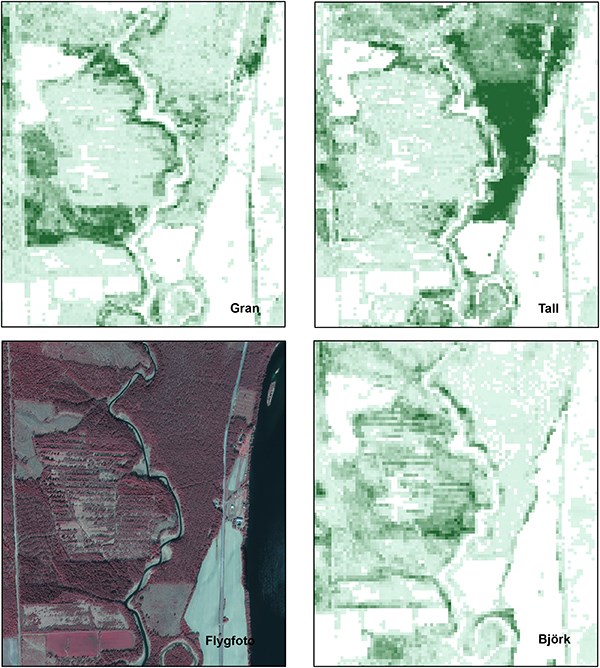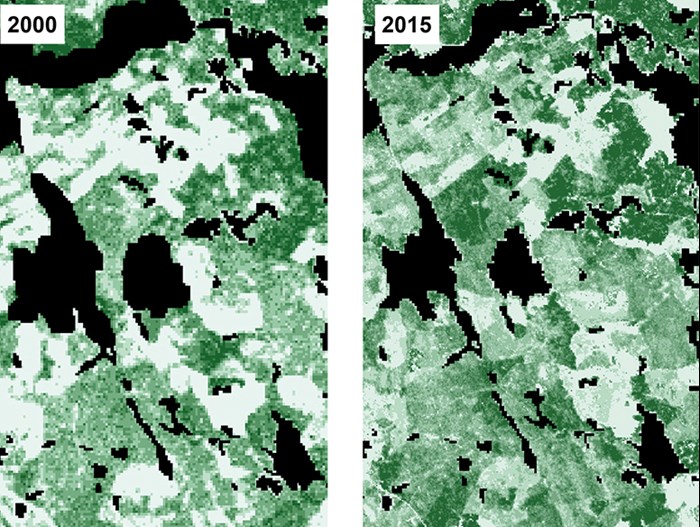The demand for up to date digital information about our forests is increasing, as is the use of geographic information systems (GIS). Many users are interested in the possibility of viewing the forest coverage of a certain area and the tree species it contains.
The SLU Forest Map contains comprehensive, highly detailed information covering a large portion of Sweden’s woodlands and forests. The maps have been created through a co-processing of field data from Sweden’s National Forest Inventory (SLU) and satellite images. The 2015 SLU Forest Map also includes surface models from Lantmäteriet.
Anyone may download and use the SLU Forest Map.
If published, the map’s source must be stated:
- Källa: SLU Skogskarta, Institutionen för skoglig resurshushållning, SLU or
- Source: SLU Forest Map, Dept. of Forest Resource Management, Swedish University of Agricultural Sciences.
SLU Forest Map has been developed and produced by the Division of Forest Remote Sensing at the Department of Forest Resource Management, SLU Umeå.
The map’s funding bodies include the Swedish Environmental Protection Agency, the Swedish Forest Agency, the Swedish National Space Agency, RESE, SUFOR and SLU.

